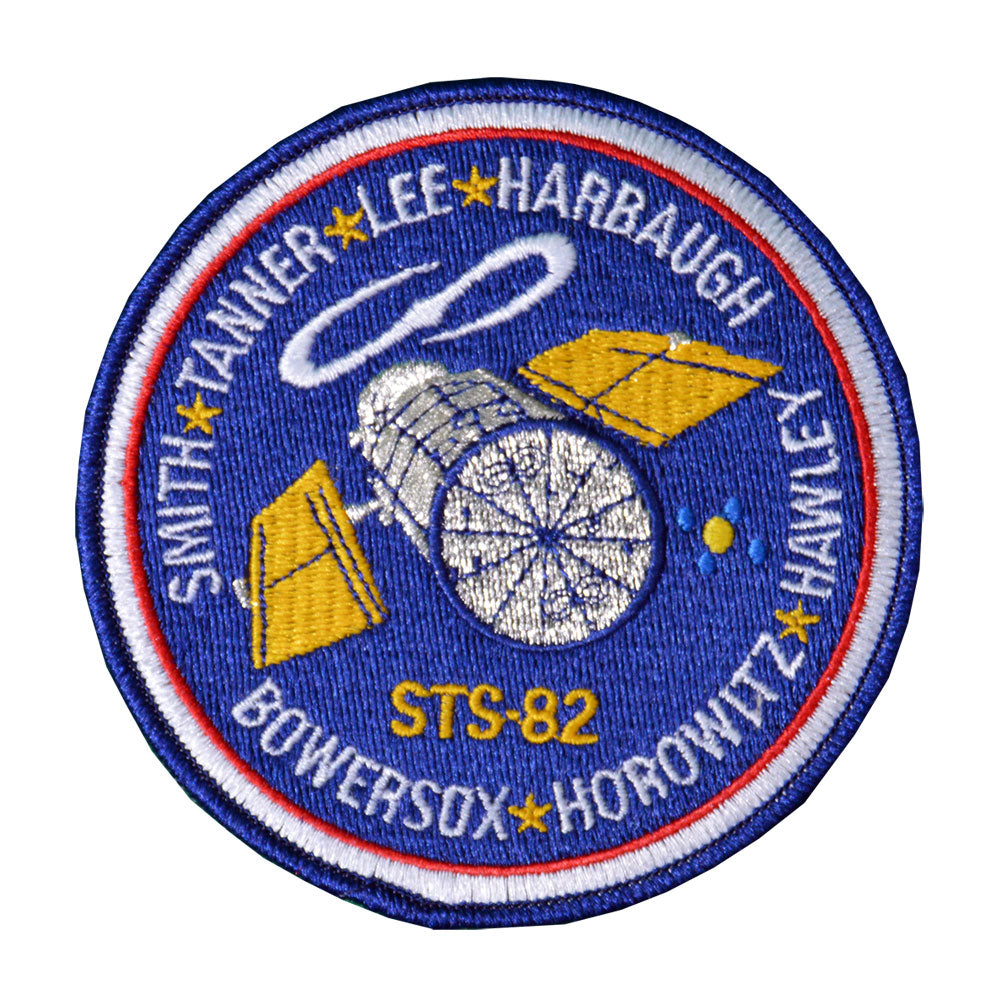
STS-82 Patch
Mission Highlights
STS-82 demonstrated anew the capability of the space shuttle to service orbiting spacecraft as well as the benefits of human spaceflight. A six-member crew completed servicing and upgrading of the Hubble Space Telescope (HST) during four planned extravehicular activities (EVAs) and then performed a fifth unscheduled space walk to repair insulation on the telescope.
HST deployed in April 1990 during STS-31. It was designed to undergo periodic servicing and upgrading over its 15-year lifespan, with first servicing performed during STS-61 in December 1993. Hawley, who originally deployed the telescope, operated the orbiter Remote Manipulator System arm on STS-82 to retrieve HST for a second servicing at 3:34 a.m. EST, Feb. 13, and positioned it in the payload bay less than half an hour later.
Relying on more than 150 tools and crew aids, Lee and Smith performed EVAs 1, 3 and 5, and Harbaugh and Tanner did EVAs 2 and 4. EVA 1 began at 11:34 p.m. EST, Feb. 13, and lasted six hours, 42 minutes. One of Hubble’s solar arrays was unexpectedly disturbed by a gust of air from Discovery’s airlock when it was depressurized, but was not damaged. Lee and Smith removed two scientific instruments from Hubble, the Goddard High Resolution Spectrograph (GHRS) and Faint Object Spectrograph (FOS), and replaced them with the Space Telescope Imaging Spectrograph (STIS) and Near Infrared Camera and Multi-Object Spectrometer (NICMOS), respectively. STIS expected to shed further light on supermassive black holes. NICMOS features more capable infrared detectors and will give astronomers their first clear view of the universe at near infrared wavelengths between 0.8 and 2.5 micrometers.

